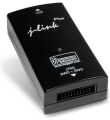Flasher per produzioni esternalizzate, con protezione della proprietà intellettuale
Scenario: al termine del progetto una società decide di esternalizzare la produzione in massa presso uno o più partner terzi e/o geograficamente remoti. Con la soluzione Flasher Secure di Segger tutti i dati sensibili rimangono segregati e sicuri in un server gestito dall’organizzazione. (altro…)
Leggi tutto


